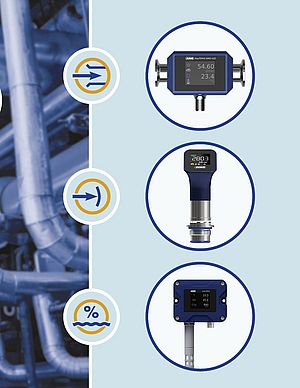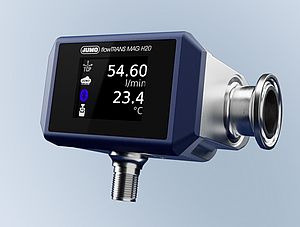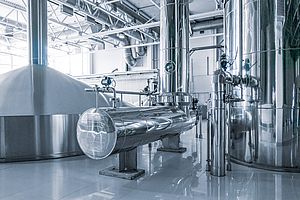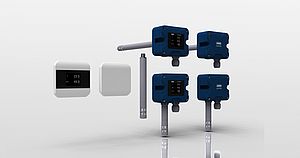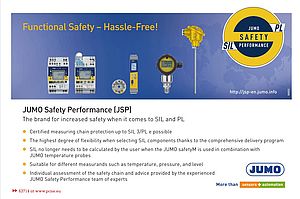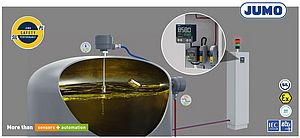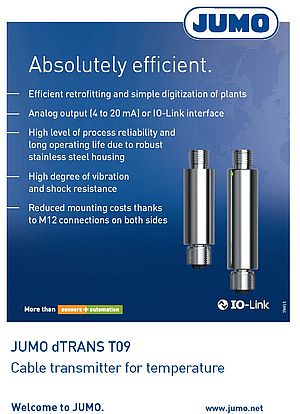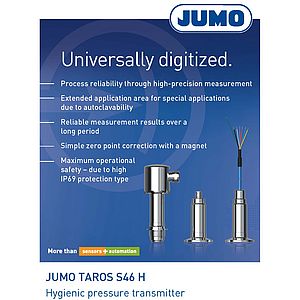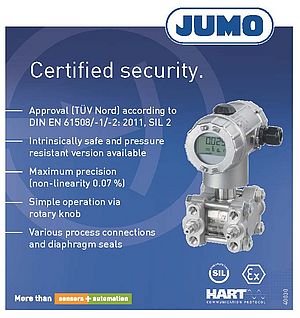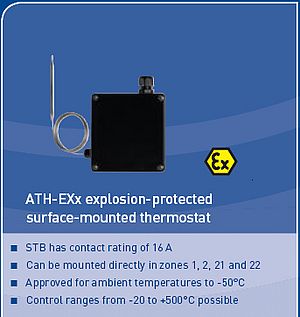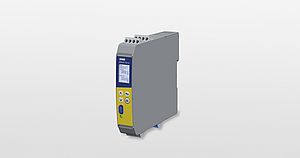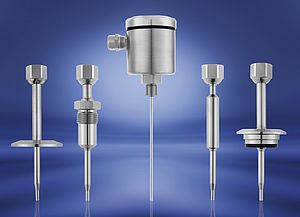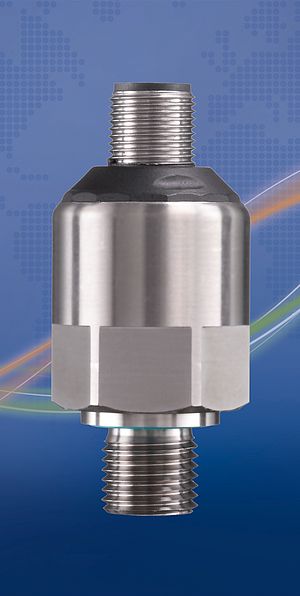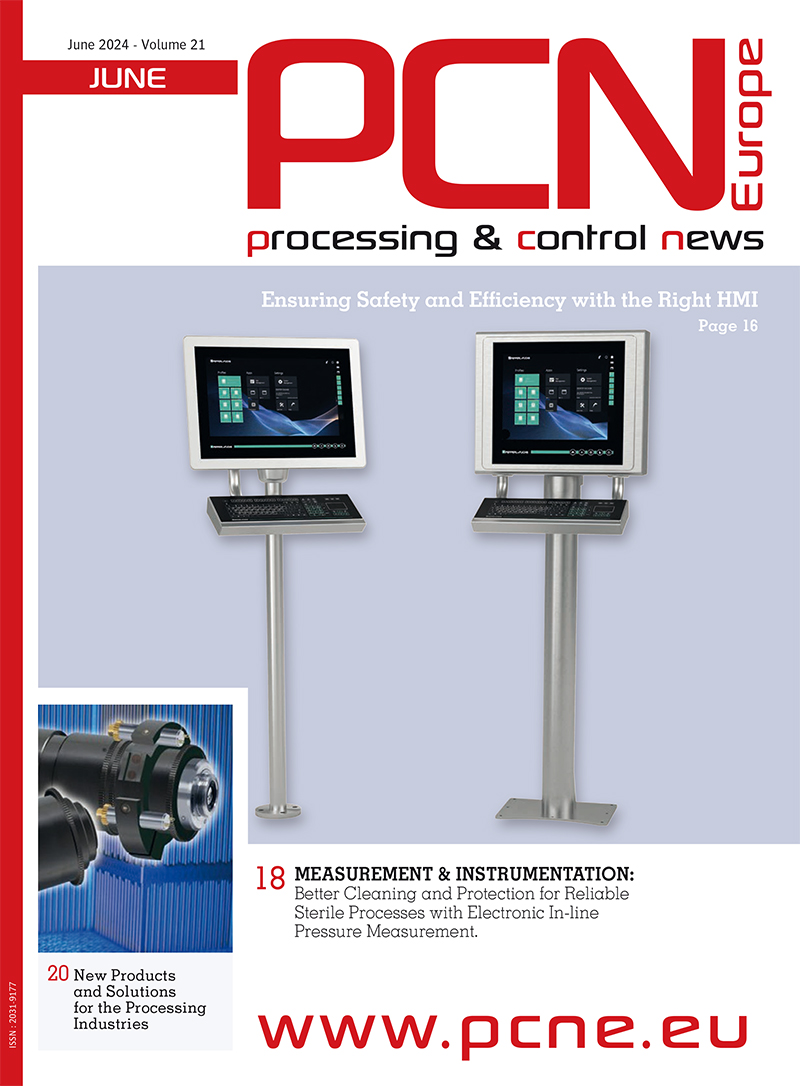The JUMO ZELOS C01 LS can be used in liquids or bulk solids with temperatures between -40 and +200 °C, also for pressurized tanks or pipes. Thanks to the unique auto-calibration feature, point level measurement is detected reliably and with long-term stability. In addition, after configuration, the 2 switching outputs can automatically distinguish safely between measurement medium and cleaning media or foam. Even adhesions do not present a problem for the reliable sensor. The product design contributes to miniaturization in sensor technology so that compact systems can be implemented.
Safe and easy-to-mount
Mounting is easily achieved with a standard torque wrench. Since the seal to the medium goes through the sensor tip, no separate seal is required, thereby eliminating the possibility of a mix-up.
Short-circuit and reverse polarity protection provides additional safety for the JUMO ZELOS C01 LS. An antivalent electrical circuit enables the detection of line faults such as a cable break. A firmware update profile allows the sensor to be updated while installed so that plant downtime is minimized. PNP, NPN, push-pull, and IO-Link are available as output signals. A 360° illuminated status display enables easy recognition of the sensor status according to NAMUR and VDI/VDE.
The level detector has protection types IP67/IP69. All parts in contact with the medium are made of PEEK with a homogeneous surface roughness of less than Ra 0.8 µm. It is available with extensive approvals for applications in the food industry, railroad technology, and shipbuilding. Furthermore, the requirements according to intrinsically safe explosion protection, the Water Resources Act (WHG), and electrical safety according to UL are met.
Automatic media recognition
The JUMO ZELOS C01 LS monitors containers, protects pumps from running dry or controls valves, PLC inputs, and warning signals. Typical applications include storage tanks for solid and liquid food, water and wastewater, and sand or granules. Media recognition is automatic and can be specifically taught with and without software if required.





